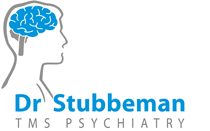
Noninvasive Brain Stimulation Helps Treat Cocaine Addiction
Author: Liam Davenport | December 14, 2015
Copyright © 2016 by WebMD LLC. All rights reserved.
Early results suggest that repetitive transcranial magnetic brain stimulation (rTMS) reduces both substance use and cravings in cocaine addicts, offering hope of a novel medical treatment for patients with this addiction.
The researchers found that rTMS to the dorsolateral prefrontal cortex (PFC) significantly improved outcomes in this patient population compared with standard pharmaceutical therapy, even among individuals who later switched to brain stimulation.
Although recognizing the preliminary nature of the findings, Antonello Bonci, MD, scientific director, National Institute on Drug Abuse (NIDA), and adjunct professor, John Hopkins University, Baltimore, Maryland, told Medscape Medical News that “this could be the medical treatment that can really make patients make that big jump in terms of quality of life, in terms of reduction in cravings.”
The research was published online December 4 in European Neuropsychopharmacology.
Cuts Cravings
The team recruited 32 cocaine-addicted patients who were seeking treatment for their addiction at the teaching hospital affiliated with the University of Padua. The participants were randomly assigned to an rTMS protocol or to standard pharmacologic agents to treat the symptoms associated with cocaine addiction for 29 days.
rTMS consisted of one session per day for 5 days, followed by one session per week for 3 weeks. This was followed by a 63-day follow-up period in which all participants were offered rTMS therapy.
All 16 patients in the rTMS group and 13 (81%) of those in the control group, which received standard therapy, completed stage one of the study.
Participants who received rTMS had a significantly higher number of cocaine-free urine drug test results than those in the control group (P = .004), with 69% and 19%, respectively, having positive outcomes, defined as either remaining cocaine free or remaining in the study.
Multivariate logistic regression analysis that controlled for age indicated that rTMS had a significant effect on outcomes (odds ratio of a positive outcome, of 6.47; P = .035).
Among the 10 patients who switched to rTMS during stage two of the study, three had a positive result on drug screening, compared with eight during stage one, representing a significant reduction (P = .037).
rTMS also significantly reduced craving scores in comparison with control therapy in stage one of the study (P = .038), although this effect did not persist into the second stage (P > .05). Both rTMS and control therapy improved depressive symptoms, with no significant difference between the treatments.
Potential Mechanism
Dr Bonci explained that there are two theories as to how rTMS reduces cravings and substance use among cocaine addicts. One is that the stimulation causes activation of the dorsolateral PFC.
He noted that previous studies have shown that the dorsolateral PFC is at the center of a wide network of areas in the frontal, temporal, and limbic brain regions. Moreover, in some of these areas, exposure to cocaine produces hypofunctional alterations and diffused responses. One theory as to why this occurs is that the rTMS is causing a downstream stimulation of this network.
